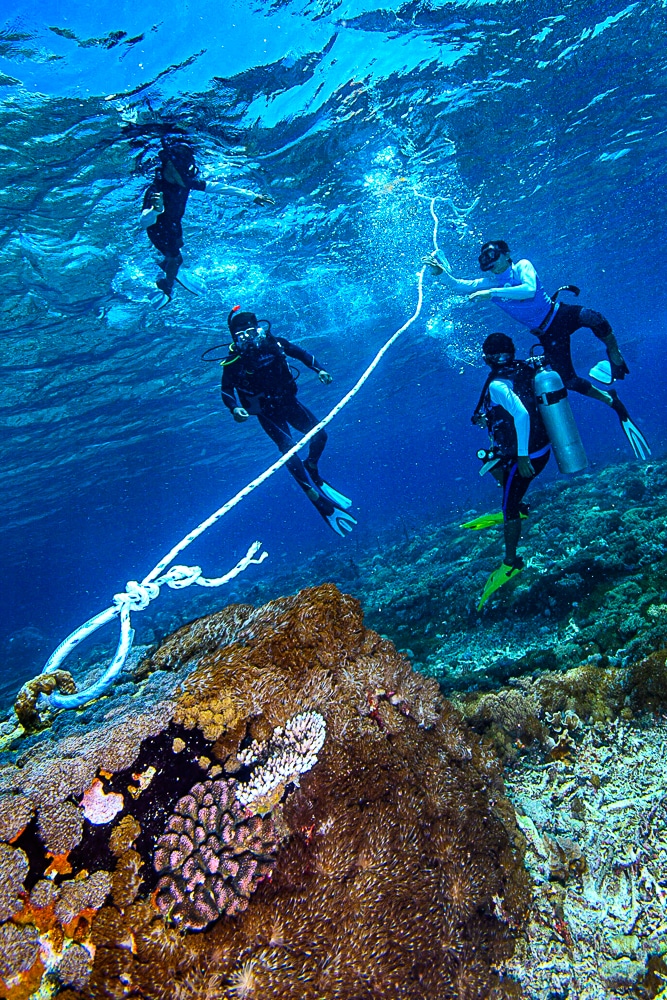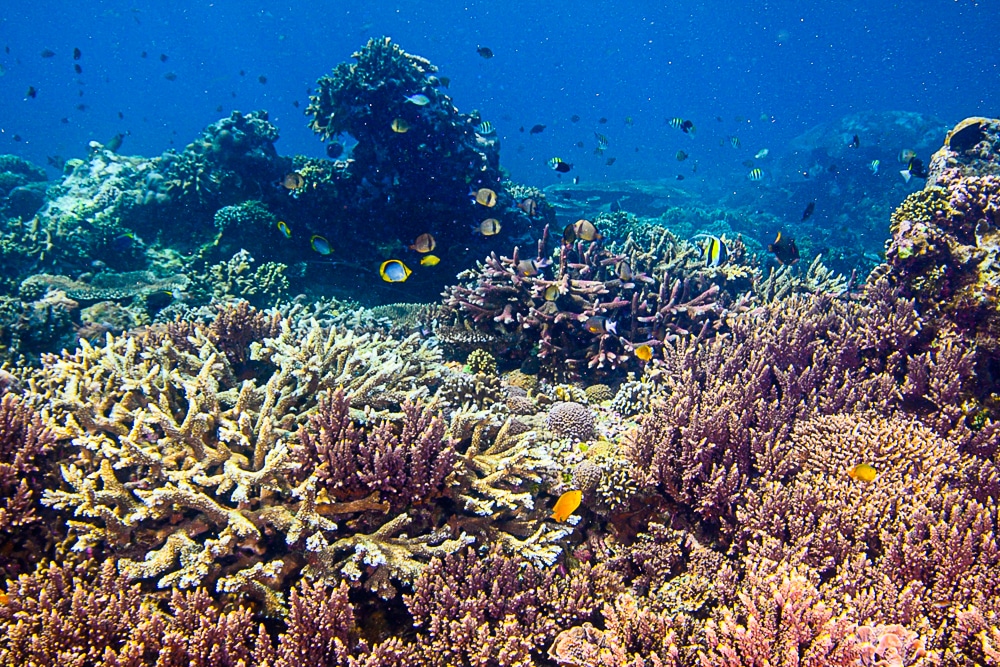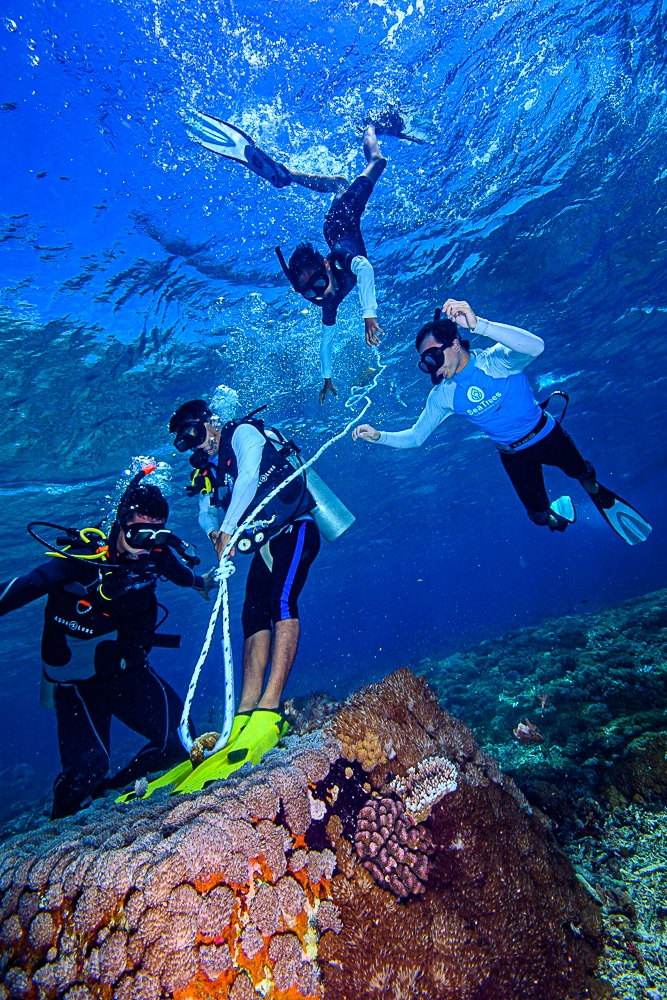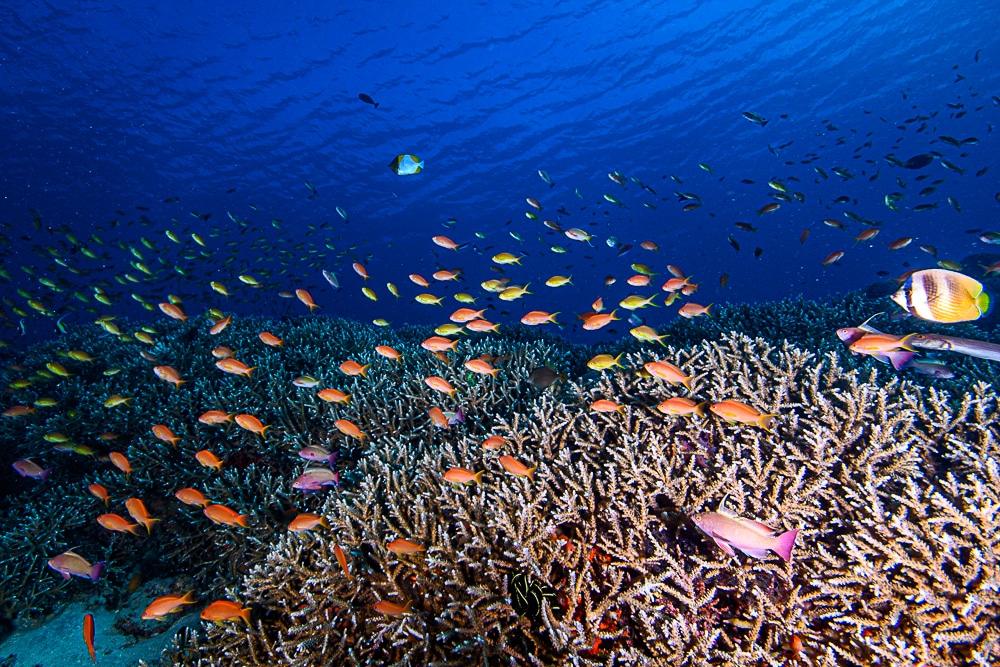Mooring buoys play a crucial role in reef conservation by providing designated and secure attachment points for boats. This significantly reduces the need for anchoring, which can cause substantial physical damage to fragile coral reefs by crushing corals and disrupting the seabed. By offering a safe alternative, moorings help to protect the delicate structure and biodiversity of reef ecosystems, allowing these valuable habitats to remain intact for marine life and future generations. Their presence supports sustainable tourism and recreational activities while minimizing negative impacts on these precious underwater environments.

Risk of increased coral reef damage with indiscriminate anchoring with increased tourism
With the surging demand for diving tourism, more boats are navigating the waters of Indonesia. However, a glaring issue emerges when moorings are scarce along the shoreline. The result? Boats resort to anchoring, either for parking or waiting for eager divers. Frequently because the damage is done below the surface, it is out of sight and out of mind.

Unfortunately, at many popular dive sites, the frequent and indiscriminate dropping of boat anchors is a major contributor to coral reef destruction. While a single anchor may seem inconsequential, the cumulative impact of numerous anchors deployed daily can rapidly decimate entire reef systems, highlighting the urgent need for protective measures.
Lack of moorings lead to boat accidents
But the lack of moorings doesn’t only lead to coral casualties; it can also create boat traffic congestion. Picture this: multiple boats jostling for space at a single mooring, a situation ripe for potential accidents.

In Ped, Nusa Penida, there are already some moorings along the shore, but some of the mooring concrete blocks and ropes are too small and too shallow to accommodate larger vessels. The moorings need to be properly maintained. If not, the rope degrade over time leaving only the concrete blocks which is of no use.
Ocean Gardener and partners added new moorings
Understanding the urgency and recognizing the shortage of moorings, we took action. In Ped, Nusa Penida area, we strategically installed five moorings in locations where boats can float safely above the reef even during low tide.

Our innovative solution involves the deployment of concrete blocks in reef-free areas. Besides that it provides a base to install mooring, you can see in the pictures where hard and soft corals are actually growing on these concrete blocks, restoring the once rubble areas to a growing ecosystem of corals.

Different moorings for different boats
We’ve thoughtfully incorporated a range of buoy sizes, not just for aesthetics but for practical reasons. Small buoys signify spots for smaller boats, while the larger ones are designated for bigger vessels.

Why the distinction, you ask? In some areas, as the tide recedes, the reef surfaces dangerously close to the water’s surface. Random boat-buoy pairings could spell disaster, potentially causing coral breakage when larger boats touch the reef.
Mooring for large Liveaboard boats are needed all over Indonesia

Currently, there’s a significant lack of mooring infrastructure for large live-aboard vessels (over 20m). This dangerous deficit forces these boats to consume considerably more fuel finding mooring sites, leading to more climate change.
The expense of implementing such moorings shouldn’t fall solely on fishermen’s groups as they are usually part of impoverished coast communities. Their installations are a crucial investment in coral reef conservation. Moorings represent a tangible commitment to protecting our underwater treasures, promoting safer and more sustainable boating practices.
Just minutes after we installed these moorings, boats started to use it!
